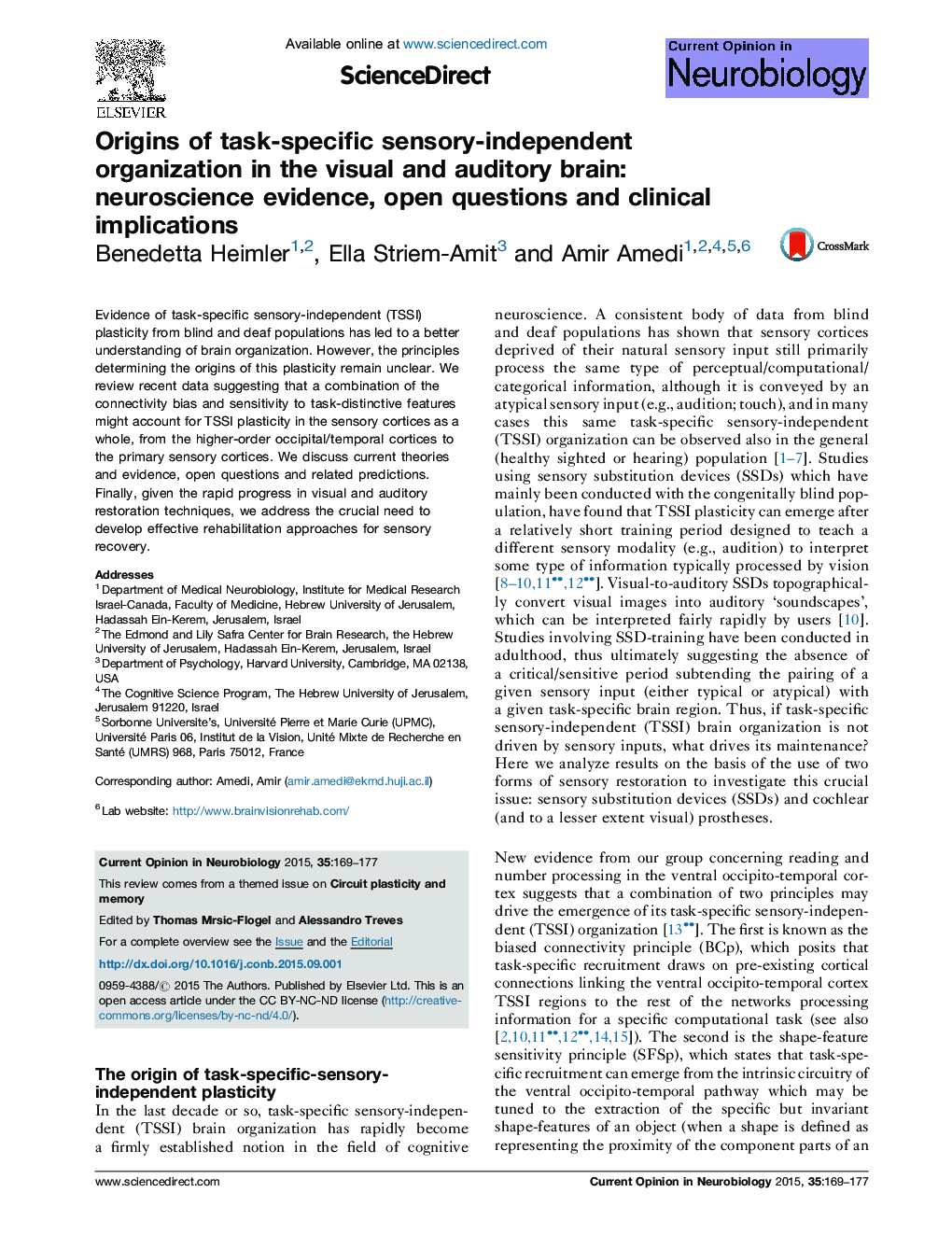| Article ID | Journal | Published Year | Pages | File Type |
|---|---|---|---|---|
| 6266398 | Current Opinion in Neurobiology | 2015 | 9 Pages |
â¢Biased connectivity and shape sensitivity explain plasticity in sensory deprivations.â¢Large-scale network organization is preserved in deprived retinotopic visual cortex.â¢Sensory recovery is improved through multisensory rather than unisensory training.â¢Sensory substitution devices (SSDs) are useful tools for sensory rehabilitation.â¢Pairing SSDs with medical and chemical interventions holds promise for rehabilitation.
Evidence of task-specific sensory-independent (TSSI) plasticity from blind and deaf populations has led to a better understanding of brain organization. However, the principles determining the origins of this plasticity remain unclear. We review recent data suggesting that a combination of the connectivity bias and sensitivity to task-distinctive features might account for TSSI plasticity in the sensory cortices as a whole, from the higher-order occipital/temporal cortices to the primary sensory cortices. We discuss current theories and evidence, open questions and related predictions. Finally, given the rapid progress in visual and auditory restoration techniques, we address the crucial need to develop effective rehabilitation approaches for sensory recovery.
